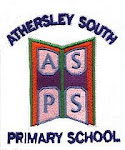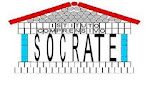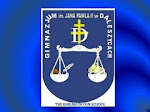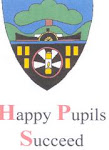This is our final performance. The children are between 5 and 6 and although they are so young, they performed their dance with great enthusiasm. The first dance is from Rodops and the second from the Thracian folklore areas in Bulgaria. We hope you will like it! :)
Friday, 30 April 2010
Kindergarten №15, Zvanche - Bulgaria
Posted by Head of Muir Primary School at 22:00 5 comments
Thursday, 29 April 2010
" Polonaise" by students of John Paul II High School in Daleszyce
Hello again! This is our recording ready to be watched. These are the third year students of John Paul II High School in Daleszyce in Poland. They prepared this Polish traditional dance, and they were very motivated by the fact you would see them dancing. Our headmaster is dancing in the first pair.The Eurodance 2010 Contest seems a great opportunity to share what we like and what the past generations taught us to do. It's nice to say that the decorations of the room (a gym) were made by the students. Greetings from Poland!
Posted by Gimnazjum im. Jana Pawla II at 17:27 4 comments
Primary school Spinut from Split, Croatia
Old Split dances
The traditional dance in our city of Split was founded more than 100 years. It consists of three dances: "monfrina", "četvorka" and "šaltin polka" These dances are characterized by elegant moves, refined posture and softness of steps which show the influence of Western part of the Mediterranean.
Posted by Julijana Novakovic at 11:02 4 comments
Monday, 26 April 2010
Gedminai main school, Klaipėda, Lithuania
This is our final performance.
Lithuanian traditional dance "Kalvelis" and
Lithuanian traditional dance "Kauškutis"
Best wishes from Klaipėda!!!
Posted by Saulius at 19:23 5 comments
Sunday, 25 April 2010
Kindergarten №15, Zvanche - Bulgaria
Bulgaria consists of 6 folklore regions- Thracian, Shopska, Northern, Strandja, Rodopska and Pirinska. Each one of them is unique and beautiful with a different dance tempo and music. Also every region is characterized by a special national costume with matchless features. Kazanlak is in the Thracian folklore region.
The dance with which we are taking part in this project is from the Rodop region. It’s based on a famous Bulgarian song and it is extremely suitable for the kids of this age. In this short presentation we have decided to make you familiar with our town and kindergarten and also to show us in action. Remember this still a repetition and it needs a lot of work, yet I hope you will like it.
Posted by Head of Muir Primary School at 11:16 1 comments
Saturday, 24 April 2010
Istituto Montale - Italy
This is the competition entry from Istituto Montale - Italy.
Dear Eurodance Friends,
It has been such a pleasure for us and our students to take part in this project. We have had the opportunity to meet a lot of interesting and challenging school realities. Our dance is not a traditional one, as in Tuscany there are no traditional dances at least none that students know or still practise, probably in other parts of Italy, in the south of Italy for example or the islands dance tradtions are still alive. So we let the students decide what to do and as we are rehearsing for a final performance in June during the students' festival we thought we might send a sequence of the show we are working on. It is an adaptation of the musical Joseph and the Amazing Technicolor Dreamcoat and we have also painted the beautiful mask of the pharaoh you can see in the background. We are really eager to watch all your beautiful dances and we hope you will dedicate a few minutes to our video too. We ideally shake all your hands and magically dancing we hold you tight in a huge hug.
Posted by Head of Muir Primary School at 18:11 6 comments
Wednesday, 21 April 2010
A DEMOTIKO SXOLEIO XYLOFAGOU CYPRUS
This is our competition entry.
Posted by congeo at 17:39 7 comments
Sunday, 18 April 2010
Thank you so much for your solidarity and sympathy!
Posted by Anonymous at 12:45 0 comments
Monday, 12 April 2010
The polonaise is a stately Polish processional dance, performed by couples who walk around the dance hall; the music is in triple meter and moderate tempo. The dance developed from the Polish dance (taniec polski) of the 18th century; this form, in turn, was derived from the chodzony (walking dance) which was popular in the 17th century and known as a pieszy (pedestrian), or chmielowy (hops) dance. The latter form had its roots in the folk wedding dances, from which it separated and then entered the dance repertoire of the nobility. The folk variants continued to develop independently of the "Polish dance," resulting in such dances as chodzony, chmielowy (in the villages), and świeczkowy (in the towns).
Posted by Anonymous at 15:41 0 comments
Sunday, 11 April 2010
Hello from Daleszyce, Poland
Posted by Anonymous at 20:39 3 comments
Friday, 2 April 2010
KLAIPEDA GEDMINAI MAIN SCHOOL - LITHUANIAN TRADITIONAL DANCE
Posted by Saulius at 18:30 1 comments






























